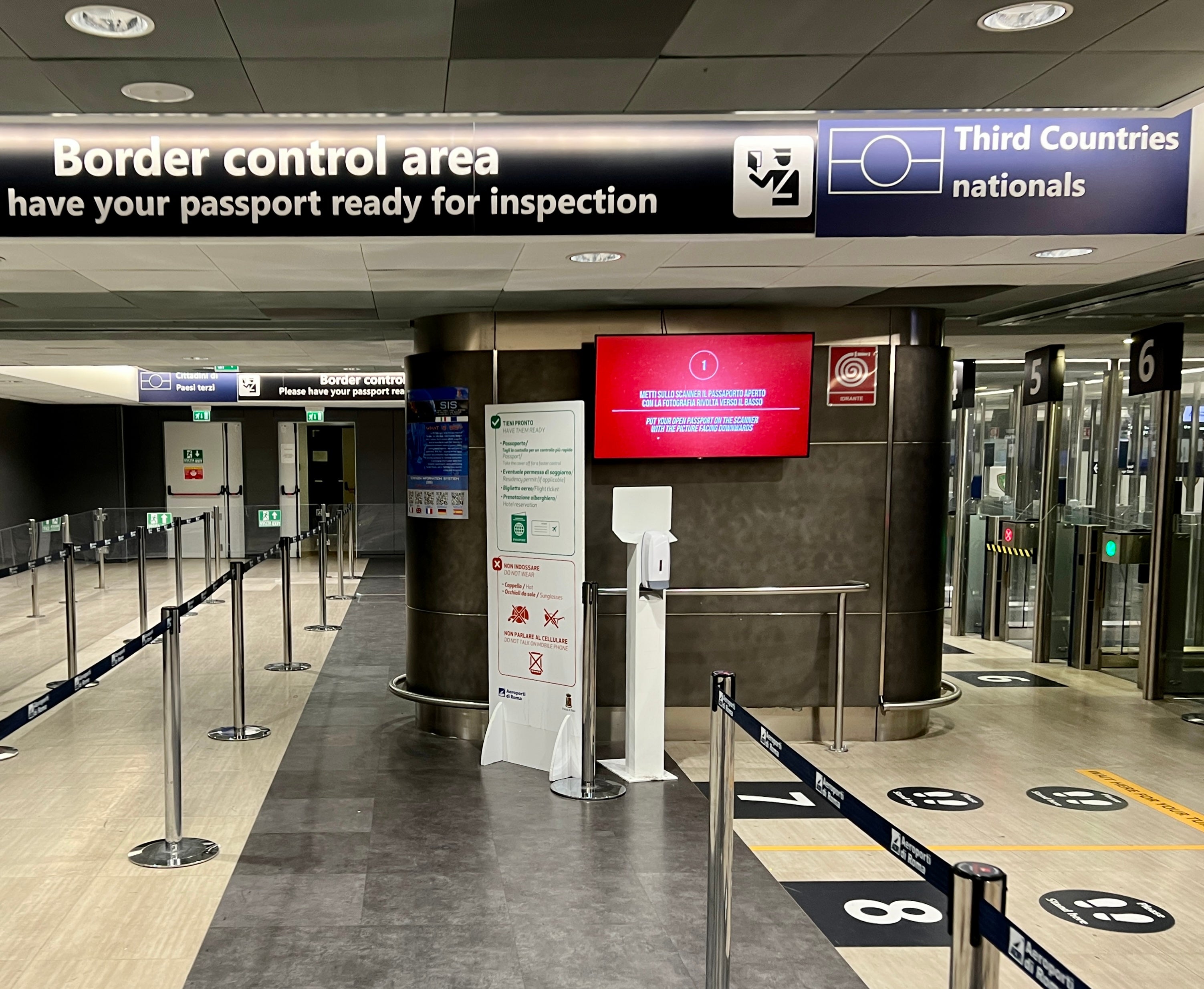Travel fears over ‘big bang’ launch of EU border system in autumn 2024
Exclusive: No ‘soft launch’ for pan-European IT project says Brussels – despite concerns from Ryanair

Ryanair has warned that the EU’s much-delayed Entry/Exit System (EES) is not yet fit for testing – even though the European Commission has vowed to launch the “smart borders” project at a single moment next year.
The Independent has studied the evidence provided by Europe’s biggest budget airline to the UK parliament’s European scrutiny committee. It backs up concerns expressed privately by senior travel industry figures about the risks involved in imposing the Entry/Exit System at a single moment.
But Brussels insists the pan-European linkage of all frontiers to a central database will happen on a big-bang basis. Officials in Brussels have confirmed to The Independent that “no ‘soft launch’ is foreseen” for the new system.
In its evidence, Ryanair laments the lack of information provided and ability to develop systems that will work on day one.
The airline says: “It is not yet possible to properly test changes to our systems due to delays in providing test environments and many aspects of the system requirements either have not been specified or are simply not clear to us.
“This makes meeting the requirements very difficult, regardless of the repeated delays in the implementation date.
“Overall, this whole project has been delayed multiple times and has been poorly managed.”
Ryanair says the implementation date has “been postponed on three occasions due to the complexity of the programmes and the lack of readiness of border authorities across the EU”.
But the European Commission believes all the member states will be ready by the end of July 2024, with the Europe-wide launch in the autumn.
EES represents the biggest-ever change to European Union borders. All entries to, and exits from, the EU and wider Schengen area will be registered centrally.
The aim is to make Europe’s borders more secure, particularly against potential terrorists, and to tackle overstaying and illegal migration.
The Entry/Exit System will apply to all EU nations except Cyprus and Ireland – plus Iceland, Norway and Switzerland.
The UK was involved in the initial development of EES up to June 2016. After the EU referendum, the government negotiated for British passport holders to become “third-country nationals” and therefore subject to the new digital system.
Once the Entry/Exit System is in operation, British travellers will have to provide fingerprints and facial biometrics on their first encounter with the new frontier formalities. For subsequent visits within three years (or the life of the passport), only one biometric need be checked. This is likely to be the face, which is easier to register.
One senior travel industry figure told The Independent: “To us it looks like madness to assume every border post, from Norway and Russia in the Arctic to Bulgaria and Turkey in the south will be ready on a single day. It makes much more sense to test it out one stage at a time.”
But the EU believes that the coherence of the whole system depends on it starting on a common date – to allow everyone crossing in or out of Europe from that day to be registered.
The European Commission spokesperson for justice, equality and rule of law, Christian Wigand, said his organisation and individual member states were working “to ensure that everything will be ready for the successful launch of the Entry/Exit System”.
According to Eurotunnel the provisional date for implementation is Sunday 6 October 2024.
Mr Wigand told The Independent: “Member states should be ready by end of July 2024, after which the exact start date will be published.”
France requested that EES should be deferred until after the Paris Olympics, which will end in early August 2024.
The European Commission ambitiously boasts: “The main advantage of the EES is saving time. The EES replaces passport stamping and automates border control procedures, making travelling to European countries using the EES more efficient for the traveller.”
But the requirement to submit fingerprints and facial biometrics will sharply increase the processing time at ports, rail terminals and airports.
The challenge is particularly acute at the two hard European Union frontiers in Kent: the Port of Dover and the Eurotunnel terminal at Folkestone. Passport checks are “juxtaposed”, meaning that French Police aux Frontières examine documents before motorists make their Channel crossing.
EU citizens will not be required to undergo any such tests. However, most cross-Channel travellers are British.
Eurotunnel estimates the average time for processing a car through the French frontier will rise from under 60 seconds to between five and seven minutes for the initial registration of data.
Around six months after the Entry/Exit System is running, the next step required of UK travellers to Europe will be to obtain an online permit in advance of journeys to the EU.
The “Electronic Travel Information and Authorisation System” (Etias) is currently expected to enter service in the spring of 2025. Unlike EES, an additional six months’ grace period will be allowed for travellers, meaning Etias will not be compulsory for British holidaymakers in the summer of 2025.
Subscribe to Independent Premium to bookmark this article
Want to bookmark your favourite articles and stories to read or reference later? Start your Independent Premium subscription today.

Join our commenting forum
Join thought-provoking conversations, follow other Independent readers and see their replies